Abstract
A slurry was prepared from six frozen pot pies diluted 1:5 with distilled water, two chicken, two turkey, and two beef pies of different brands. This slurry formed a reference sample and was placed in sterilized jars, frozen, and used as needed throughout the experiments. A second slurry was prepared in a similar manner from a frozen beef pot pie and a chicken pot pie, and was used as a control in only one experiment. The total count of microorganisms and the number of coliforms, Escherichia coli, salmonellae, and coagulase-positive staphylococci per gram were determined. Samples of slurry were inoculated in decimal dilutions with one or more of the following: Salmonella typhimurium, E. coli, and a strain of staphylococcus that causes food poisoning. The natural flora was found to exert an inhibitory effect upon the growth of the added microorganisms after incubation at 35 C for 18 hr. The inhibitory effect on growth was in part due to pH. The predominating organism isolated from the natural flora after incubation was a lactobacillus, which, when added in mixture with the test organisms in sterilized slurry, did not exert the profound inhibitory effect observed in the case of the natural flora. Some factors which may be concerned with the inhibition were investigated.
Full text
PDF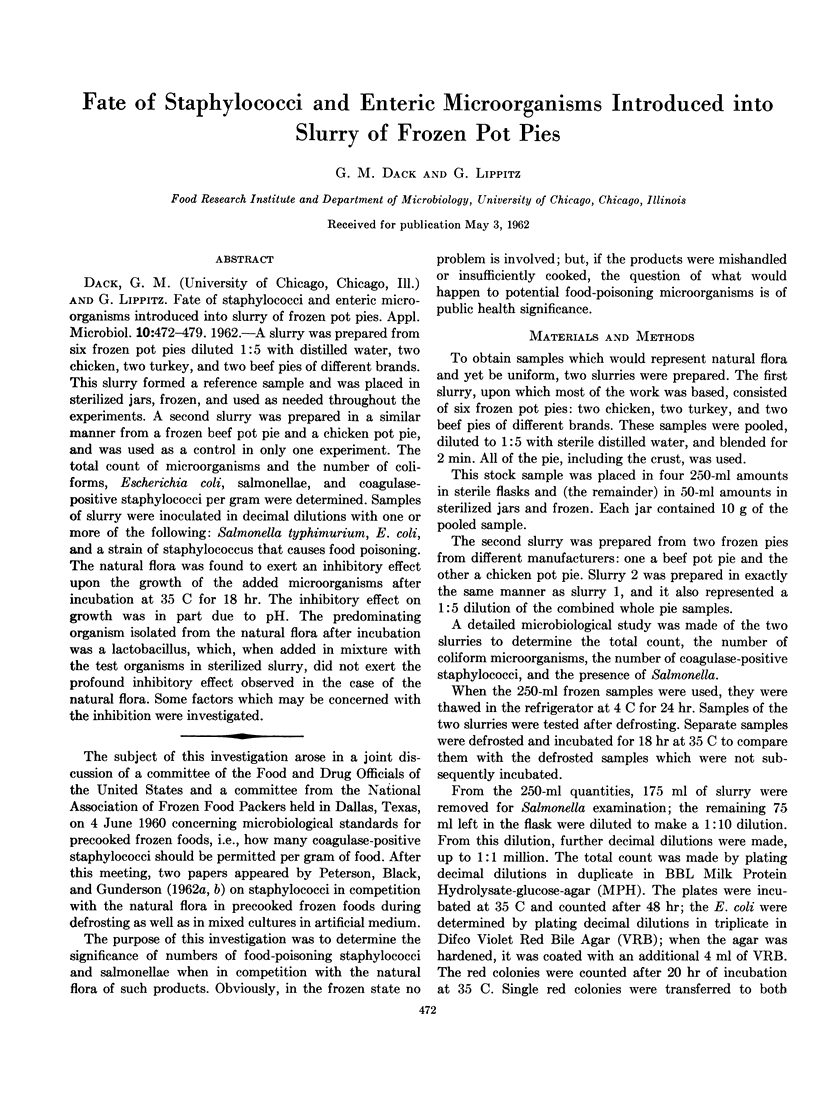
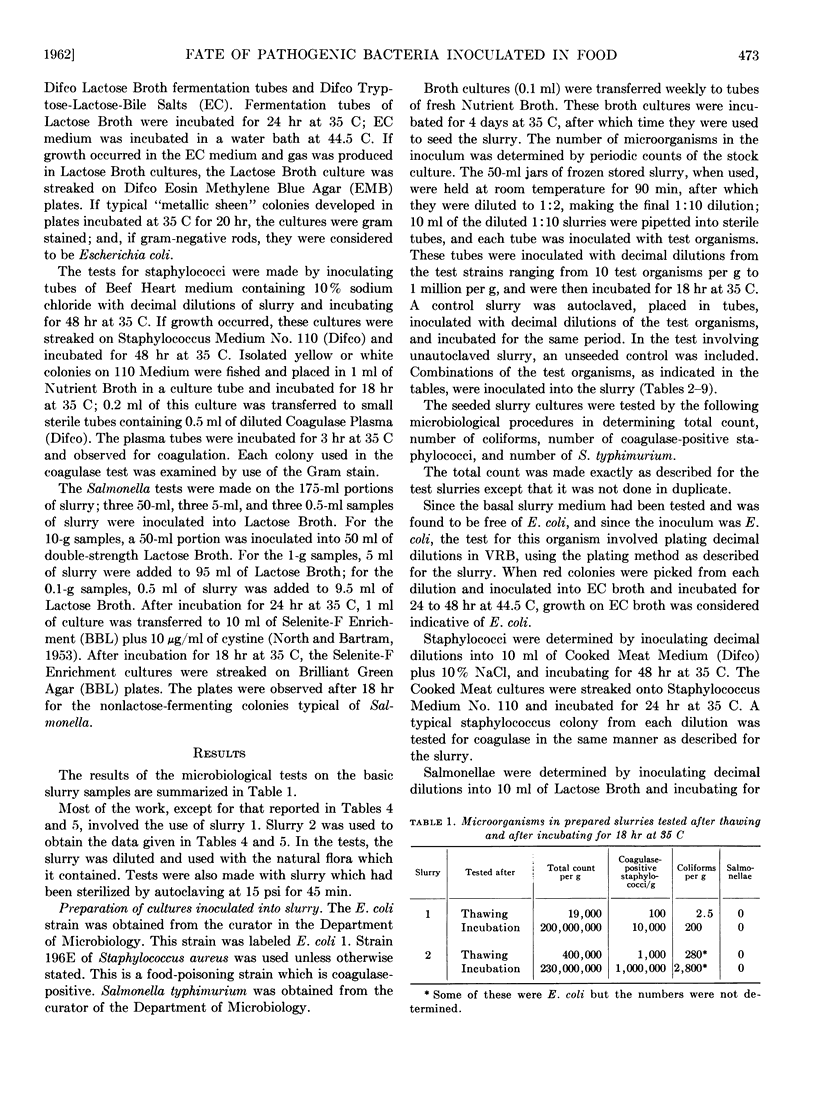
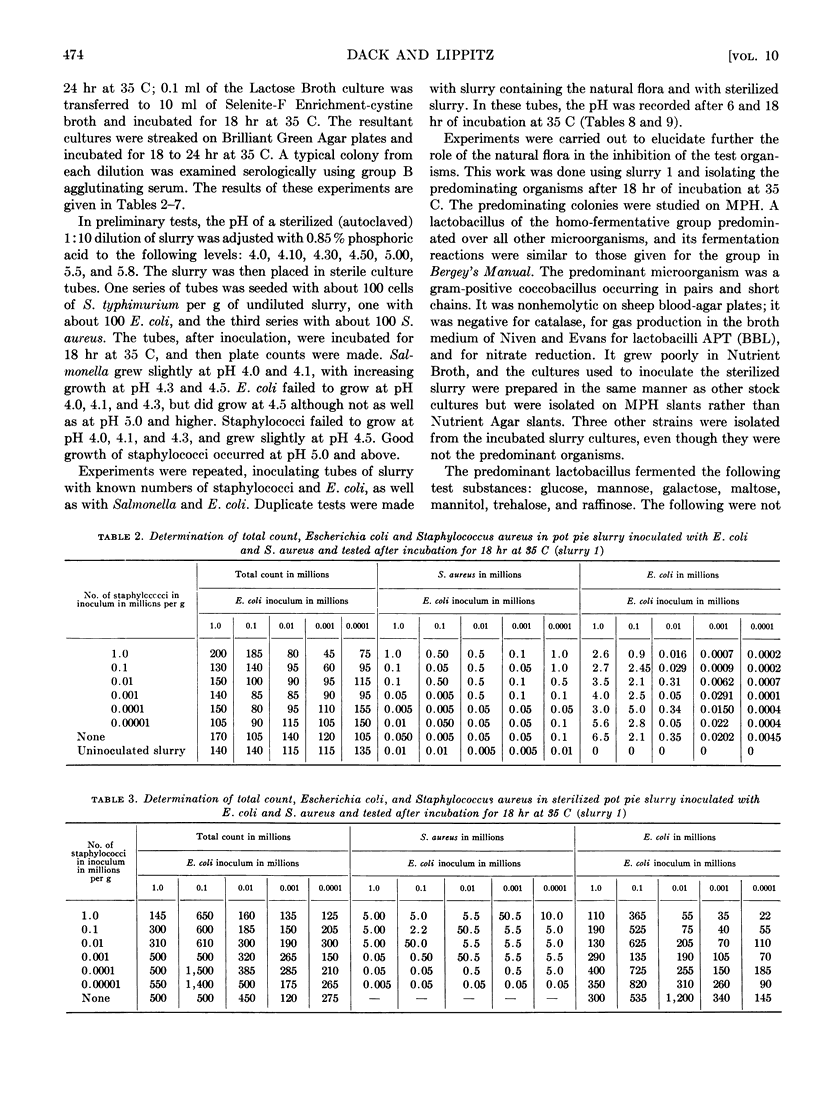
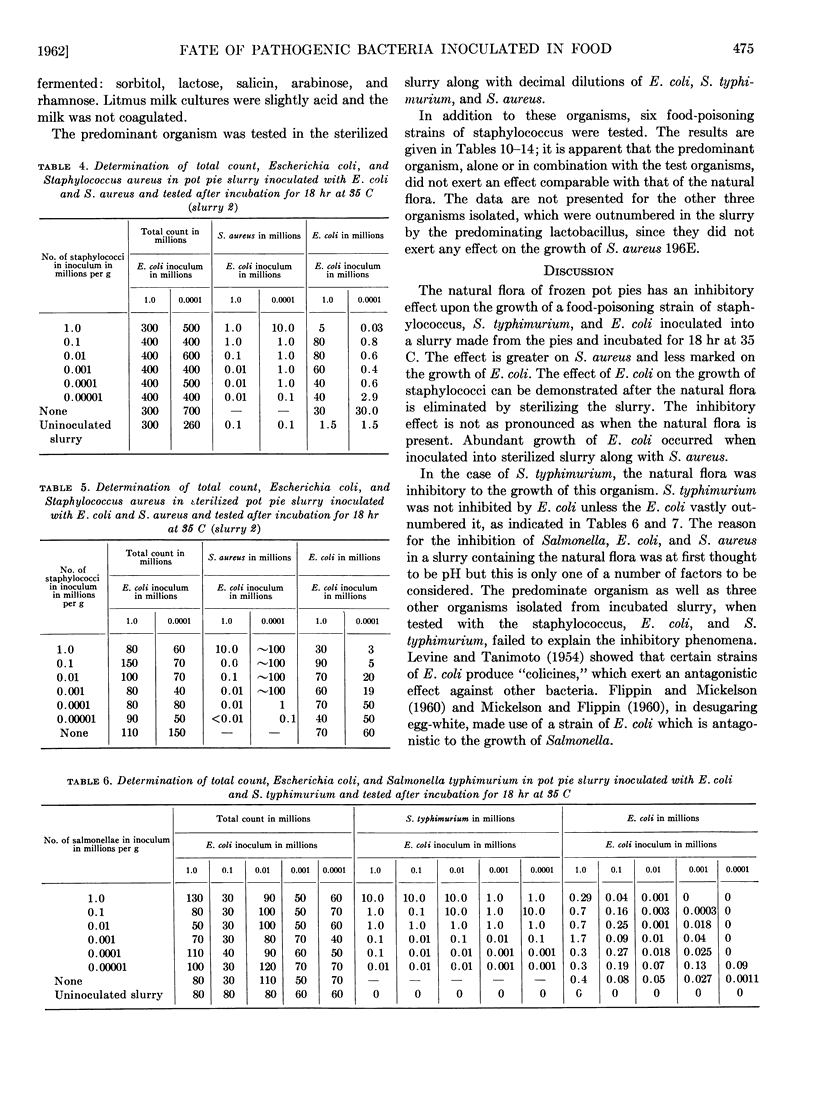
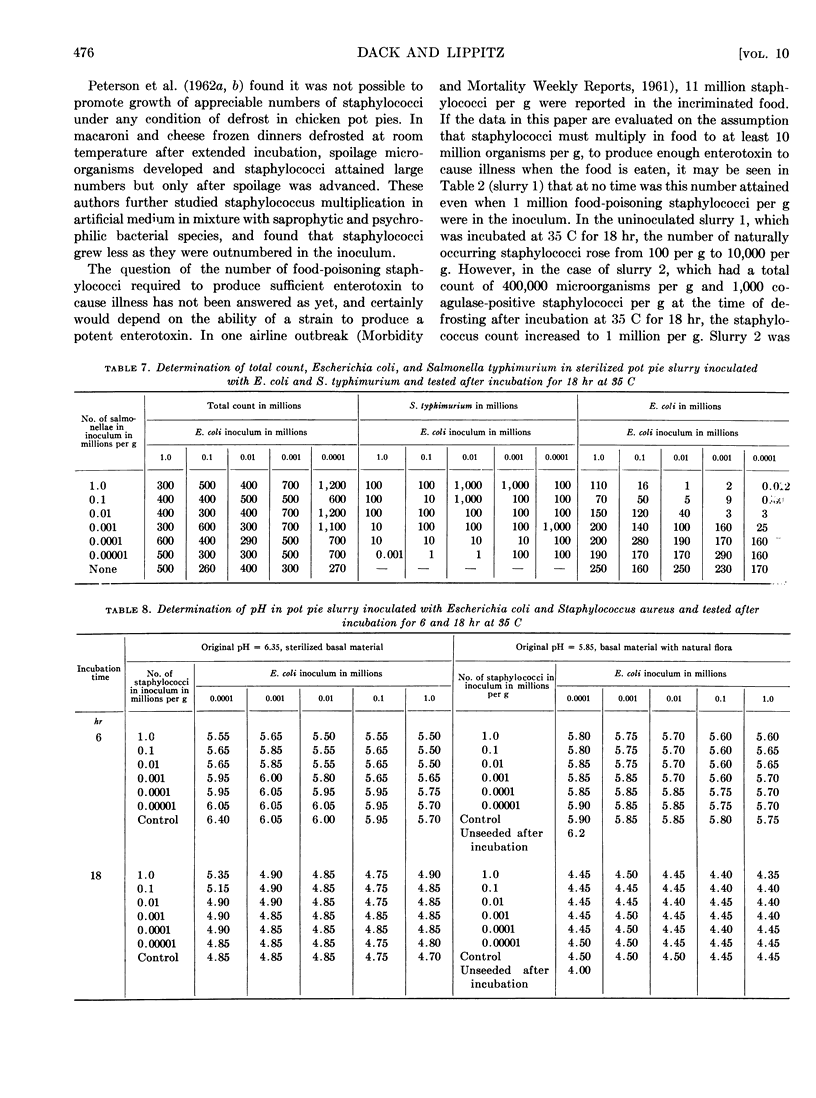
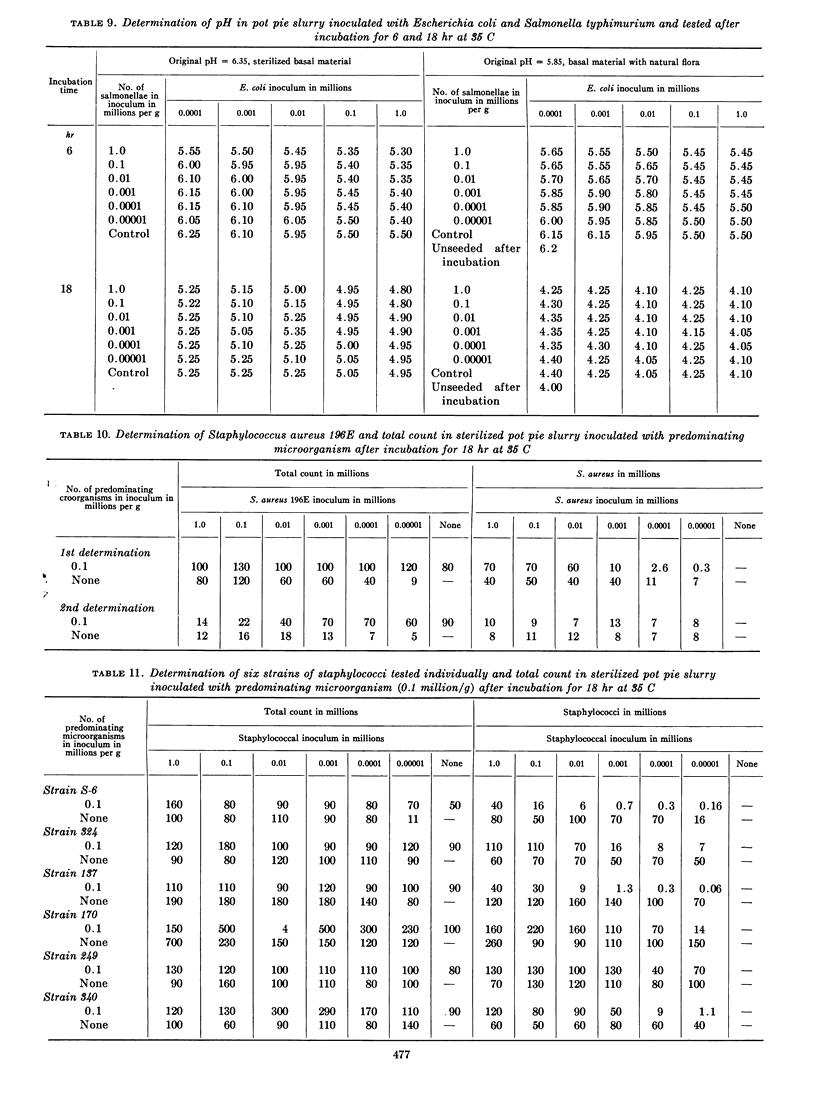
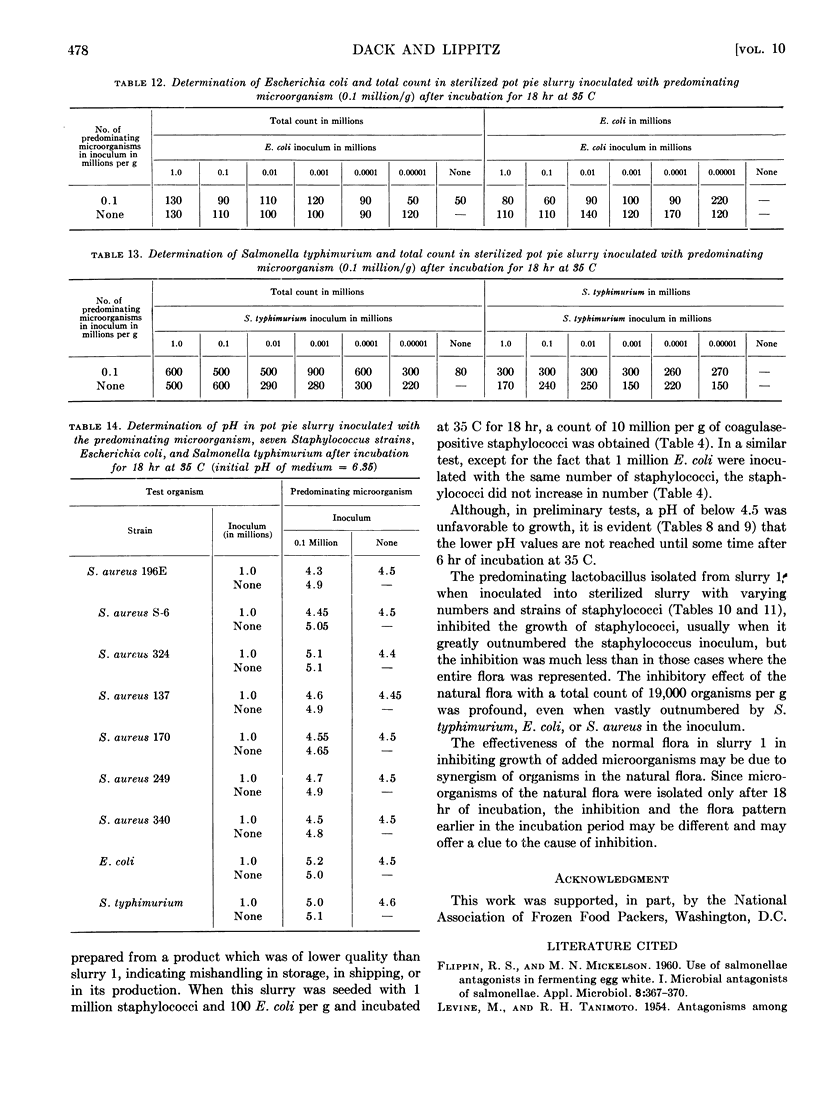
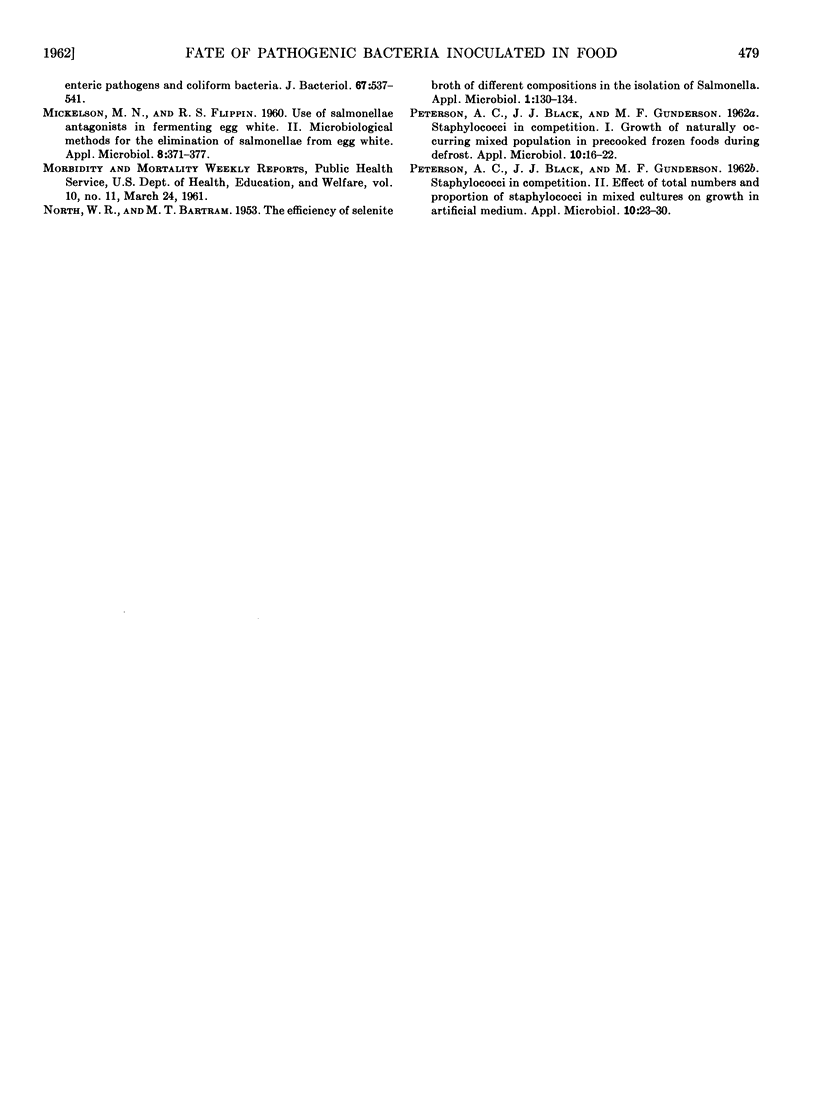
Selected References
These references are in PubMed. This may not be the complete list of references from this article.
- FLIPPIN R. S., MICKELSON M. N. Use of Salmonellae antagonists in fermenting egg white. I. Microbial antagonists of Salmonellae. Appl Microbiol. 1960 Nov;8:366–370. doi: 10.1128/am.8.6.366-370.1960. [DOI] [PMC free article] [PubMed] [Google Scholar]
- LEVINE M., TANIMOTO R. H. Antagonisms among enteric pathogens and coliform bacteria. J Bacteriol. 1954 May;67(5):537–541. doi: 10.1128/jb.67.5.537-541.1954. [DOI] [PMC free article] [PubMed] [Google Scholar]
- MICKELSON M. N., FLIPPIN R. S. Use of Salmonellae antagonists in fermenting egg white. II. Microbiological methods for the elimination of Salmonellae from egg white. Appl Microbiol. 1960 Nov;8:371–377. doi: 10.1128/am.8.6.371-377.1960. [DOI] [PMC free article] [PubMed] [Google Scholar]
- NORTH W. R., BARTRAM M. T. The efficiency of selenite broth of different compositions in the isolation of Salmonella. Appl Microbiol. 1953 May;1(3):130–134. doi: 10.1128/am.1.3.130-134.1953. [DOI] [PMC free article] [PubMed] [Google Scholar]
- PETERSON A. C., BLACK J. J., GUNDERSON M. F. Staphylococci in competition. I. Growth of naturally occurring mixed populations in precooked frozen foods during defrost. Appl Microbiol. 1962 Jan;10:16–22. doi: 10.1128/am.10.1.16-22.1962. [DOI] [PMC free article] [PubMed] [Google Scholar]
- PETERSON A. C., BLACK J. J., GUNDERSON M. F. Staphylococci in competition. II. Effect of total numbers and proportion of staphylococci in mixed cultures on growth in artificial culture medium. Appl Microbiol. 1962 Jan;10:23–30. doi: 10.1128/am.10.1.23-30.1962. [DOI] [PMC free article] [PubMed] [Google Scholar]


